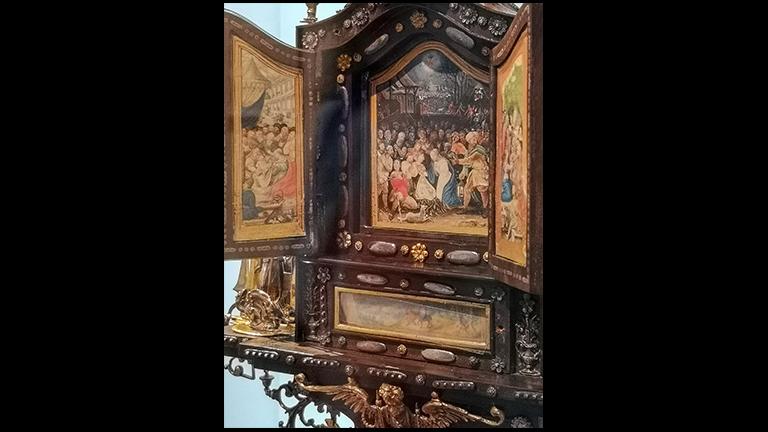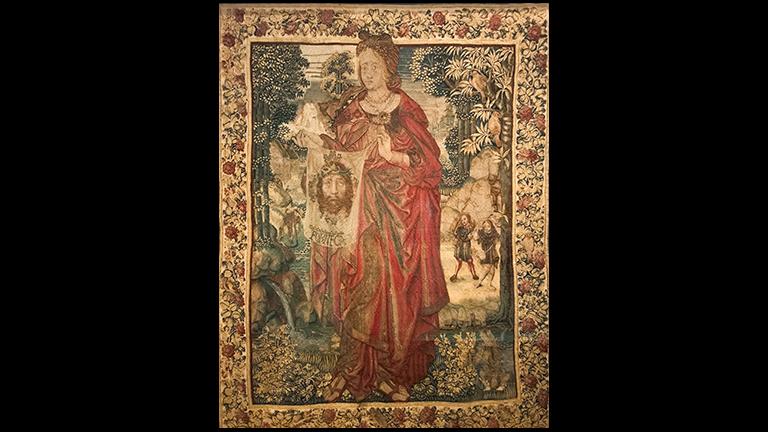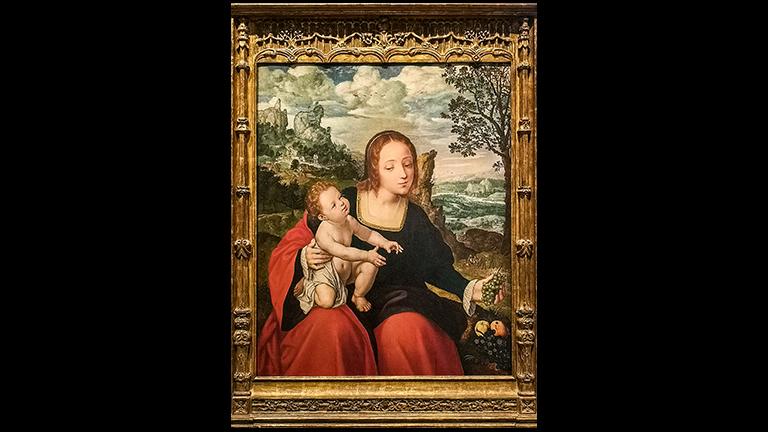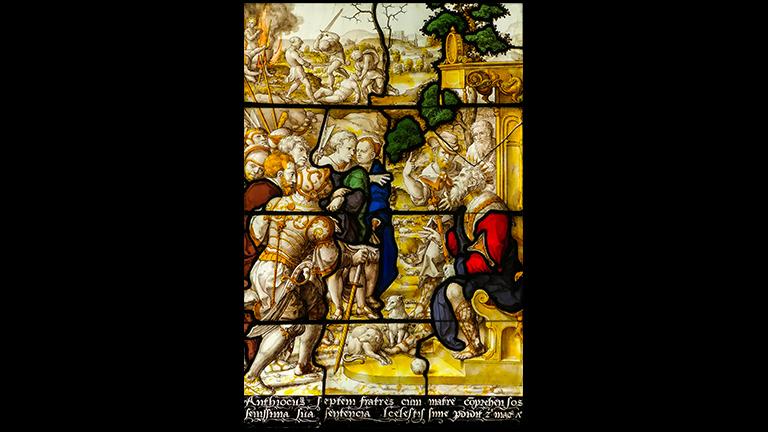What's a Masterpiece Worth?
An exhibit at the Met offers a wise and witty answer to an age-old question




What's the value of beauty? What even constitutes beauty? Who says? What gets handed down? What gets tossed onto history's trash heap? What price fame? How does it change the worth of something? These are questions the art world has wrestled with since the first crafted object changed hands. Many people don't realize that tapestries were once far more prized than paintings. And yet, who stops to look at them on the way to galleries filled with Rembrandts?
A painting is made of pigment applied to a flat surface. If the materials cost $100 dollars, how can it sell for $100 million? With a piece of jewelry, if you weigh the metal, count the gems and find the current price of each, you might have a starting point. But what if it was made by Fabergé? What if it belonged to Nefertiti? What if it fulfilled a religious purpose or holds the relics of a saint?
They say that if you lined up every art critic in the world, they still couldn't reach a conclusion. The Metropolitan Museum's exhibition " Relative Values: The Cost of Art in the Northern Renaissance" offers some thoughts that might help viewers find a way around that. Curator, Elizabeth Cleland, selected 62 masterworks of 16th century Northern European decorative arts. Gold and silver, jewels and pearls sparkle inside cases, and immediately whisper of their worth. But what of stained glass, leather, stone or shell? And how did functionality either increase or decrease value?
A Currency That Moos
A German gilded sandglass, finely wrought in about 1500 with curves and arches recalling Gothic cathedrals, is both decorative and functional. The timepiece was probably used to measure the length of prayers. It's a gorgeous object. The wall label tells us that when it was made, it would have been worth the price of one cow. Let the bidding begin.
Cleland went back to accounting records, including farm inventories, artists' guild price lists, and appraisals of the property of nobles, to arrive at a valuation model that was independent of borders or currency exchanges. Rather than guilders or florins, she chose things like loaves of bread or the daily wage of an unskilled laborer, then scaled those to something universal and easy to imagine: the value of a cow. Spending time in the gallery can feel a bit like "The Price is Right." While the objects are exquisite in design and craftsmanship, peeking at the price tag on each label is irresistible. What you find will surprise you.
Unfathomable Skill
A portable shrine by German master metalsmith Matthias Walbaum, including painted panels by Anton Mozart, made in about 1600, stopped us in our tracks. Tall and slender, the work stands 17 inches high. It's covered in incredibly fine details, with tiny architectural flourishes and entire carved panels depicting figures that are smaller than a thumbnail. Two gilded, sculpted vases of flowers top the hinges, surmounted by towers with angels. Folding panels open to reveal three miniature paintings. The largest is about the size of a matchbook cover, the side panels half as big. Within these scant square inches are worlds of wonder. Any painter might have fit a tiny face into the larger central panel. Mozart included a Nativity scene with the Holy Family, infinitesimal livestock, three wise men, row upon row of devoted onlookers, a barn and winter landscape, topped by a moonlit sky. The side panels show Biblical scenes similarly packed with figures, and below it all, on a strip no wider than a pencil, maybe an inch or so long, is a depiction of the Holy Family, complete with Mary riding a donkey. It's absolutely breathtaking. The skill involved is unfathomable. It "cost" 21 cows.
A tapestry of Saint Veronica hangs at the center of the gallery, claiming pride of place. A similar piece belonged to Catherine of Austria, Queen of Portugal, niece of Catherine of Aragon, first wife of Henry VIII, King of England. Though the value at the time was a respectable 52 cows, a brush with fame like that ensured it landed in a famous museum's collection.
A Bird Worth a Herd
The painting, "The Rest on the Flight to Egypt" was created by two Flemish artists, one an expert in landscape, the other known for figures. It's a large panel, with a carefully modeled representation of Mary and Jesus, richly attired in sumptuous colors, trimmed with gold and jewels. A still life is included – a bowl of grapes and fruits – and the scene takes place within a crowded landscape filled with trees, mountains and fluffy clouds. It's a beautiful painting that once belonged to a German baron. A visitor nearby wondered aloud, "Only five cows?"
Some of the works, like a whimsical ceramic drinking tankard, might be worth a quarter or half a cow. Surprisingly, a Dürer woodcut could be had for a fractional bovine. A bird figurine, delicately carved from rock crystal with ruby eyes, tops the price list at a whole dairy farm's worth, or 275 cows.
A Google search finds cows costing somewhere around $2000 to $5000 today; even cows are variable. Tastes change, fame fades, and there may never be an explanation for what people treasure and value. It's fascinating to ponder, but, as the show reminds us, it's all relative.
IF YOU GO
What: "Relative Values: The Cost of Art in the Northern Renaissance"
Where: The Met 1000 Fifth Ave
When: Through February 28, 2021